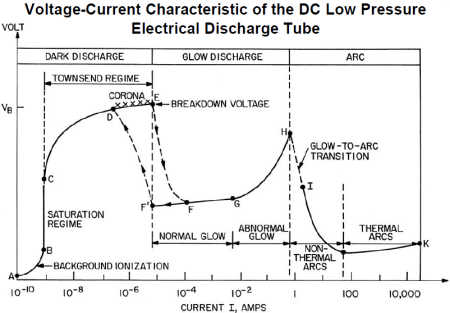|
|
Dissecting Bad Models (Part 1) – Astrophysical "Magnetic Slinkies"
by Michael Gmirkin
|
|
May 22, 2009
|
|
|
|
A number of astrophysical assumptions and deductions
have gone unchallenged for far too long. Rational, skeptical
scientists must occasionally take an introspective look at
their own discipline and excise any persistent errors. Let's
shall...
|
|
|

The Orion Molecular Cloud superimposed on the Orion constellation.
The inset shows the Slinky-like coils of the helical magnetic field
surrounding the filamentary cloud.
Credit: Saxton / Dame / Hartmann / Thaddeus / NRAO / AUI / NSF
[Click to enlarge]
|
|
|
In 2006,
observations
from the Green Bank Telescope revealed the presence of magnetic
fields associated with a filamentary portion of the Orion Molecular
Cloud.
Using the GBT, Robishaw and Heiles … found that the magnetic field
reversed its direction, pointing towards the Earth on the upper side
of the cloud and away from it on the bottom … When they combined all
available measurements, the picture emerged of a corkscrew pattern
wrapping around the cloud.
But how accurate are the conceptual models in which the observations
are couched? Unfortunately, it seems that many incorrect and outdated
assumptions still manage to creep their way into interpretations.
Not least of all, there still seems to exist an erroneous notion
that magnetic field lines are real-world entities that can be
likened to a string or a rubber band and can be cut, twisted,
stretched or otherwise manhandled.
The field might be wrapped around the front of the cloud.
That is simply not the case. Magnetic field lines are only an
aid to help visualize the strength and direction of magnetic
fields. Magnetic fields themselves do not congregate in
"lines" or "ropes" with regions void of
magnetic field falling between and around them. The fields are
continuous and smooth not discrete and broken up.
This error of reification (assuming something is real or physical
when it is no more than a conceptual tool to aid in understanding
a significantly different real-world object or process) leads to
other erroneous assumptions and theories that follow from it.
[A] shock wave [could] have carried the magnetic field along
with it, [Heiles] said, “until it reached the molecular
cloud! The magnetic field lines would get stretched across the
face of the cloud and wrapped around the sides.”
Not only does the error of reification occur in claiming that
magnetic field lines are real entities that could have been
"draped" around the molecular cloud, two other more
serious physical errors creep into the same thought.
Firstly, in "draping" magnetic fields around a
real-world object, one would have to presuppose that magnetic
fields could be "cut" or made "open-ended."
This is far too common an error.
According to Maxwell's second equation (∇ · B = 0),
that simply cannot physically happen. It states that the net
magnetic flux leaving (or entering) any closed surface is zero.
In real-world terms, this means that the same number of conceptual
"field lines" must be drawn entering the surface as are
drawn exiting the surface and vice versa. When properly understood
this means that magnetic "field lines" can
only be drawn as completed loops.
They must close. There can be neither
magnetic
monopoles nor "cut," "open" or
"dangling" field lines. Put simply, magnetic fields
are solenoidal (they have neither a beginning nor an end, with
no exceptions).
Electrical engineers are very careful when drawing schematics
involving magnetic fields to show that, if any lines would be
too large to fit completely on a page, where a line leaves the
page, an equivalent line must be somewhere
shown to re-enter the page and vice versa. To do otherwise
conceptually and mathematically violates Maxwell's second
equation (Gauss's law for magnetism).
As such, a magnetic field line cannot be "cut"
and "draped" over a real-world object (such as a
molecular cloud), regardless of any astrophysicists wishing
it could be so.
Secondly, more egregiously and unfortunately more commonly,
the statement presupposes that magnetic fields can be
"frozen in" to plasma and carried along with it
in the absence of sustaining electric currents. Again, that
simply is not so.
The notion of "frozen in" field lines presupposes
that plasma is an ideal conductor (a superconductor that
does not resist a current flowing through it), immediately
neutralizes any charge imbalances, does not support internal
electric fields and thus any magnetic fields cannot vary over time.
However, as electrical engineer Don Scott has
pointed
out, plasma is not an ideal conductor. It has
non-zero resistance, as experiment has shown repeatedly in the lab.
This can be demonstrated simply by applying the mathematical
definition of resistance to the diagram of plasma discharge
modes. Resistance is defined by the equation R = V / I. Resistance
R (measured in ohms) is the ratio of voltage V
(measured in volts) to current I (measured in amperes).
|
|
|

[Click to enlarge]
|
|
|
It is quite clear from the diagram above that if you draw a line
from the origin of the graph in the lower left to any point on the
diagram of plasma's discharge regimes, the slope of the line will
always be positive and non-zero. That is to say, the diagram never
touches the X axis at any point. Voltage V never decreases
to zero. Ergo resistance R never decreases to zero. Ergo
plasma is not a superconductor.
Charge imbalances are not immediately neutralized and weak electric
fields (voltage potentials) can exist between discrete regions within
a plasma. As such, magnetic fields cannot be "frozen in"
to plasma and carried along with it. Understanding of magnetic fields
in plasma must therefore be understood in terms of the relationship
between electricity and magnetism. Namely, the magnetic fields in
plasma are generated by electric currents flowing within it. The
strength of the magnetic field is dependent upon the strength of
the electric current. This simple relationship is recognized in
all other disciplines.
Despite the problems with the article, a few glimmers of hope
remain, if they can be sifted from the rubble. One such potential
saving grace comes from an offhand comment:
In making theoretical models of these clouds, most astrophysicists
have treated them as spheres rather than finger-like filaments.
However, a theoretical treatment published in 2000 by Drs. Jason
Fiege and Ralph Pudritz of McMaster University suggested that when
treated properly, filamentary molecular clouds should exhibit a
helical magnetic field around the long axis of the cloud.
While the quote above may seem unassuming to the uninitiated
observer, it may hold a profound grain of truth. Most astrophysicists
have treated such structures as spheres rather than long,
straight filaments.
Why is it important though, to treat such features as long
straight filaments rather than as spheres? Because the equations
governing how the influence of the magnetic force drops off over
distance may be different if you treat the structure as a sphere
rather than as a filament.
Consider that the influence of gravity drops off with the
inverse
square of the distance from an object with gravitating mass.
Now, for a magnetic dipole (more-or-less a spherical magnetic
field), the influence of the magnetic field drops off according to an
inverse
cube relationship. But what happens when we consider the
magnetic field generated by a long, straight electric current?
Does it follow the lead of the spherical configuration and adhere
to an inverse cube relationship? No!
In fact, in the long, straight current scenario, it drops off
with the inverse of the distance (a
first
power relationship). That means its influence drops off
more slowly than the influence of gravity and much more slowly
than the influence of a magnetic dipole, making it the longest
range force of the three.
Is it possible that astrophysicists have underestimated the
reach and role of magnetic fields in the cosmos due to a simple
error of geometry? If so, this simple error may have monumental
implications.
As Fiege and Pudritz imply, treating the filaments as filaments
(and allowing for the reality that electric currents are the
progenitors of magnetic fields) may yet yield comprehensible
and more accurate results. In the Plasma Cosmology view, where
electric currents are recognized as the sole sources of magnetic
fields in cosmic plasmas, it would seem that the filaments are
electrical in nature and that the magnetic fields are a natural
consequence of the currents found there.
In fact, helical currents and filaments are not unexpected
in the plasma model. It is well known that parallel currents
will tend to form entwined ropes or
filaments,
due to their long range attraction and short range repulsion.
Moreover, other statements quickly fall in line with an
electrical interpretation.
“You can think of this structure as a giant, magnetic
Slinky wrapped around a long, finger-like interstellar
cloud,” said Timothy Robishaw, a graduate student
in astronomy at the University of California, Berkeley.
“The magnetic field lines are like stretched rubber
bands; the tension squeezes the cloud into its filamentary
shape.”
Ignoring the erroneous reification of "magnetic field
lines," the analogy to rubber bands isn't completely
hopeless.
In fact, a well-known behavior of plasma is the
"Bennett
pinch" (pinch, pinch effect, magnetic pinch,
electromagnetic pinch, plasma pinch and z-pinch are all alternate
names for the process). In a "pinch," magnetic forces
generated by the current may serve to compress the current inward
toward its axis (not unlike rubber bands holding the stems of roses
together in a bouquet). Physically, the pinch effect is the same
process that causes static sparks and lightning to occur in thin
filaments.
While the results of the GBT observations were couched in poor
terminology, the underlying observations seem both sound and
salvageable once interpreted within a valid physical framework.
Long story short, the filament in the Orion Molecular Cloud is electrified.
Metaphorically speaking, river(s) of electric current run through
it. Said current(s) generate the observed magnetic field.
Filamentation is an expected feature of such a theoretical
current and the magnetic field generated by it may serve to
pinch (compress) the materials therein.
Plasma Cosmology offers an integrated and internally consistent
interpretation of the observations while neither violating
Maxwell's equations by "cutting" or leaving
"open-ended" magnetic field lines nor incorrectly
asserting that plasmas are superconductive and able to
"drag" magnetic field lines along with them,
in the face of laboratory experiments to the contrary.
If astrophysicists are willing to introspectively assess their
own discipline and excise some erroneous assumptions and
deductions, greater understanding of the cosmos than has
heretofore been gained may yet be at hand.
Michael Gmirkin
|
|
|
Permalink to this article.
Public comment may be made on this article on the
Thunderbolts Forum/Thunderblogs (free membership required).
|
|
|
|
|
|
|






